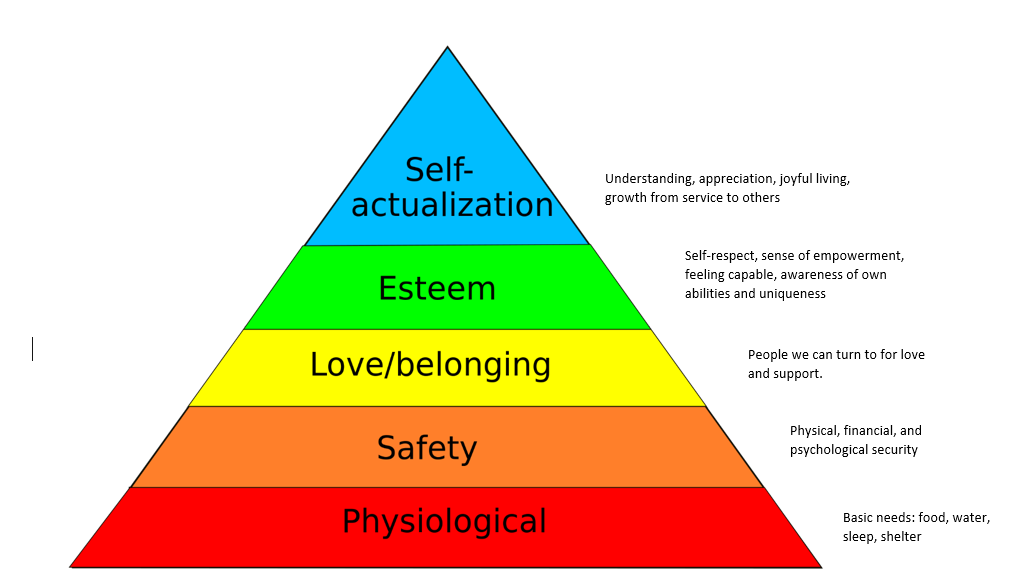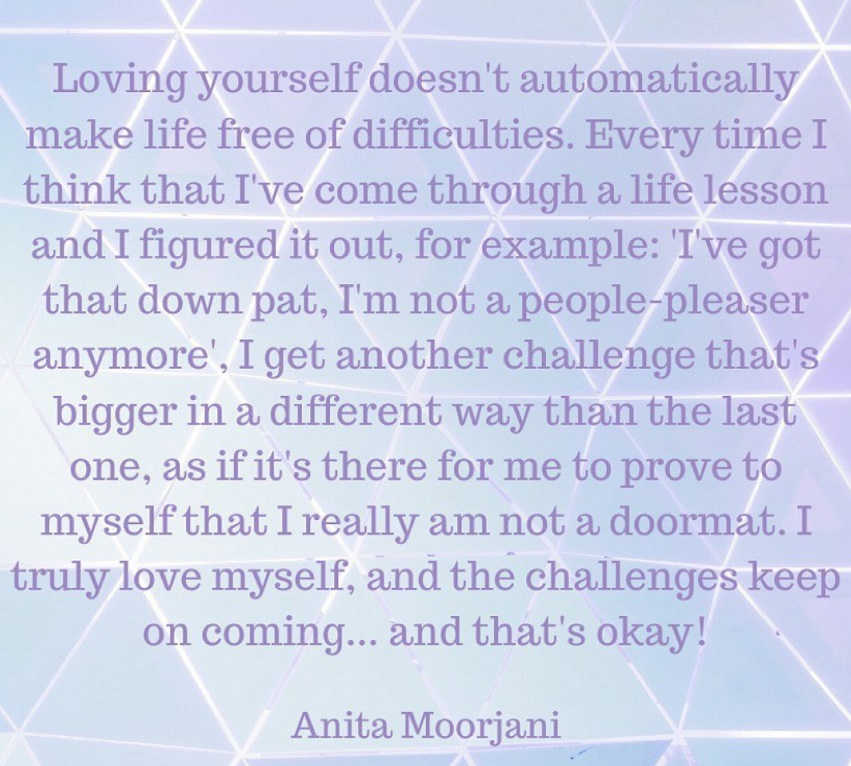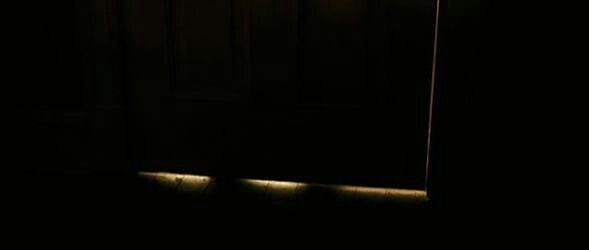A Journey to the Summit: Your Fullest Self

If you have ever taken a Psychology course, you have likely encountered Maslow’s Hierarchy of Needs.
A quick run-down of the image above: needs lower down in the hierarchy must be satisfied before individuals can attend to needs higher up. For example, someone experiencing homelessness is going to be more focused on securing their next meal and finding shelter than they would be in upgrading their computer skills. As they secure housing, a steady income, perhaps meet someone special, their needs move up the triangle accordingly. Also important to note, individuals may fluctuate between the levels based on their life circumstances. For example the death of a spouse might shift someone from Esteem, straight down to Safety (a life insurance sales person’s biggest sales pitch!)
The ability to climb this hierarchy is heavily influenced by an individual’s beliefs, fears, and internal programming developed from their life experiences. For example, someone who believes that all rich people are jerks that have only stepped on others to advance themselves, may never see their own wealth grow. Living with the subconscious belief that if they get too rich they will be perceived as a jerk, limits their ability to achieve “too much” financial success. This in turn limits their ability to satisfy the needs of Love/belonging or even Esteem because they are living outside of their true potential, choosing to play small in order to protect themselves.
Recently, however, I’ve seen another aspect emerging from these levels. This aspect is the perception of safety. It seems as though the litmus test for each level of Maslow’s hierarchy, could be:
how safe do I feel?
Easy enough to answer at the Physiological level, we can confirm if we have clean air to breathe, healthy food to nourish us, a reliable place to shelter and consistent hydration.
Similarly, at the next level, we can easily verify if we have enough money to pay the bills or if our body is ill or well. Although, as I look around our world, I wonder if this level is actually so easily achieved in our mental perceptions. We live in a world of wars, intensifying natural disasters, recessions, random violence, school shootings, stories of Me Too incidents and police brutality, riots and the hurricane of issues flowing from the recent pandemic – who could ever truly feel safe? And every ad you see in the media is desperately trying to appeal to your fear of scarcity. I can think of half a dozen stories just off the top of my head where my teenage daughter has warned me about dangers she has been “informed of” on TikTok – “look beneath the car before you get in Mom, in case someone is waiting to slice your Achilles….If your windshield in covered in honey it is because someone is about to kidnap you!” Gratefully my daughter has never known physical trauma in her young life, but you’d never know it based on the anxious warnings she shares with me!
As we move up the levels, the boxes may take more introspection to check, but the perceived lack of safety is still there. For example, where does your mind go when you ask yourself:
Who in my life do I feel safe being vulnerable with?
Which people in your life could you reveal your authentic self to and still feel safe? Immediate questions of “How would they respond, would they think I’m weak, or high-maintenance? Am I wasting their time?” float to the front of our minds in discerning safe from unsafe. My bet is lots of us wouldn’t feel safe revealing our entire true self to even our children or parents – they may get a VIP door for some backstage viewing of ourselves, but even they aren’t permitted to see all of us. Parents feel they have to be strong for their children and an example of what-to-do, and children seek their parent’s approval and pride to fill the “good-kid” bucket we’ve inadvertently socialized them to conform to.
In this regard, safety takes on an entirely different meaning. It implies safety from judgement, it implies compassionate empathy, and it feels like a soft place to land.
Satisfying needs at this level mean that when you are experiencing intense emotional turmoil, you have people in your life that will sit with you in it, hold a space for you as you work through it, and not forget that this is just a moment, not your identity. They don’t try to fix you, they don’t give you platitudes, they meet you where you are and help you get back to the center you know is there, but has just become out of focus.
On the higher levels of Maslow’s chart, the safety aspect also knocks at the door in the form of Foreboding Joy, as Brené Brown calls it in her book Daring Greatly. This is the idea that any amount of joy in our life is really just a set-up, as we wait for the other shoe to drop. I know this concept well as I struggled greatly with it when my children were little and my husband travelled extensively for work. We had a healthy family, financial well-being, a great home, wonderful extended family to support us – “we have it too good! No one has it this good! Something tragic is definitely going to befall us later, cause no one can be this fortunate. My husband’s plane is going to crash, my child is going to get hit by a car, what will it be, and when?! When?!” It was exhausting. I was not yet a fan of Brené Brown at that point in my life, but I did come to the same antidote as what she recommends: gratitude. And very quickly, I was able to pivot from fear, back to joy and lean into it. I felt safe again. Nothing else had changed, just my perspective.
Perspective is also the hinge that blame swings on. When you answered that question above about “Who in my life do I feel safe being vulnerable with?”, did you slot each person that came to mind into a category based on their behavior towards you in the past, or did you consider how much you have allowed each of them to see of your true self? Is it their behavior or your armor that has prevented a deeper connection? Chicken or the egg?
Living small because it does not feel safe to fully enjoy the abundance in your life is 100% not why we are here. We are spiritual beings living in a human body so that we can expand, enrich and grow our souls. When we try to protect ourselves from all the dangers we perceive, we also keep out everything that allows us to rise up this hierarchy and truly experience life at an elevated level.
So the next time you feel “unsafe” in the ways described here, take a moment, and a deep breath, and bravely ask yourself, “what do I believe is true in this scenario?”.
Get curious, and answer the question, “What does my fullest self look like?”



